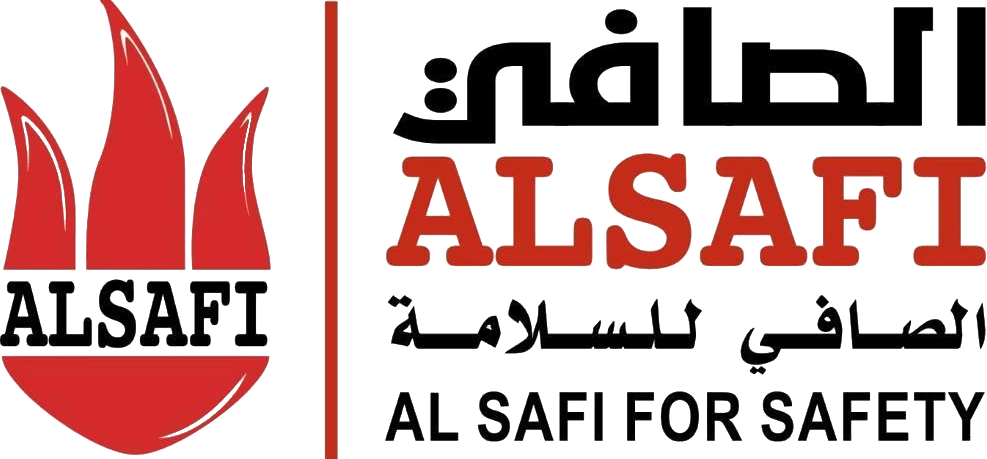المدونة
مخطط سلامة معتمد من الدفاع المدني: متطلباته وأهميته

تتزايد التهديدات والمخاطر حولنا من كل جانب؛ لذا فقد أصبح من المهم أن تكون المنشآت على أتم الاستعداد لمواجهة أي مخاطر أو تهديدات مُحتملة، سواء كانت بسبب الحرائق أو الانفجارات، أو غيرها من الحوادث الأخرى، ويُعد مخطط سلامة معتمد من الأدوات الأساسية التي تضمن لك كل الإجراءات الوقائية ضد المخاطر وضعت وتم تنفيذها بكفاءة.
لذا سنُوضح في هذا المقال كيفية تنفيذ مخطط سلامة معتمد بشكل صحيح وأهمية هذا المخطط، بالإضافة إلى توضيح دور شركة الصافي في مساعدة المنشآت على تحقيق أعلى معايير الأمان؛ من خلال تنفيذها لمخطط السلامة بالشكل الصحيح الذي يضمن امتثال المنشآت بالأنظمة المحلية والدولية، ويجعل العملاء واثقين بها.
:مخططات السلامة المعتمدة من الدفاع المدني
مخطط السلامة عبارة عن خطة مرسومة يتم بها إيضاح كافة الأنظمة والإجراءات التي ينبغي تواجدها بأي منشأة؛ من أجل الحفاظ على سلامة كل من الأرواح والممتلكات.
ويشمل المخطط عدة أمور؛ منها: تصميم الأنظمة الخاصة بالإنذار المُبكر، أنظمة التهوية، مخارج الطوارئ، وأنظمة إطفاء الحريق، ويتلخص الهدف منه في ضمان امتلاك المنشأة لكافة الأنظمة والأدوات الضرورية للتعامل السريع مع أي طارئ قد يحدث ولمزيد من المعلومات يمكنك الاتصال بنا في شركة الصافي .
أهمية مخطط سلامة معتمد
مخطط السلامة عبارة عن إطار يشمل الإجراءات والتدابير اللازمة للتقليل من المخاطر وتفادي وتجنب الحوادث، وهناك عدة فوائد لتنفيذ مخطط سلامة معتمد؛ منها:
- حماية الأفراد والممتلكات: الهدف الرئيسي لمخطط السلامة هو حماية كل من الأفراد والممتلكات من المخاطر المتعلقة بالحوادث؛ مثل الانفجارات والحرائق؛ إذ أنه يُحدد الأماكن التي يتم تركيب أنظمة الحماية بها، وتشمل أنظمة الحماية: أجهزة الإنذار المبكر، ورشاشات الإطفاء، وطفايات الحريق التي تُساعد على تقليل الأضرار.
- الامتثال القانوني: تتطلب كل من الأنظمة المحلية والدولية توفر مخطط سلامة معتمد كأحد الشروط الأساسية للحصول على تصريح الدفاع المدني أو رخصة البناء؛ إذ يضمن هذا المُخطط الامتثال لأعلى معايير السلامة بما فيها أنظمة الدفاع المدني وكود البناء السعودي؛ وهو ما يُساعد على تقليل المخاطر القانونية.
- التصرف بسرعة وكفاءة بالأوقات الحرجة: يتم عن طريق المخطط تحديد مسارات الإخلاء، ويضمن أن الممرات والمخارج تكون واضحة ومن السهل الوصول لها بحالات الطوارئ، وهو ما يضمن قدرة الجميع على إخلاء المبنى بسرعة وأمان إذا حدث حريق أو أي حادث آخر.
- زيادة مصداقية المنشأة وتقديرها: يعكس تطبيق مخطط سلامة معتمد مدى التزام المؤسسة وجديتها في حماية أرواح كل من موظفيها وزائريها؛ وهو ما يدعم بدوره سمعة المنشأة داخل السوق، ويجعلها أكثر جذبًا للمستثمرين والعملاء الذين يُفضلون التعامل مع المنشآت التي تُرعي الأمان والسلامة داخلها.
مخططات السلامة المعتمدة للمبنى
- مخططات السلامة عبارة عن رسومات تفصيلية يتم إعدادها قبل بناء أي مبنى، وتُعتبر من المتطلبات الأساسية للحصول على موافقة الجهات المختصة، مثل الدفاع المدني، وتوضح هذه المخططات كيف سيتم تأمين المبنى ضد الحريق أو أي طارئ قد يحدث.
- تشمل مخططات السلامة المعتمدة للمبنى أماكن مخارج الطوارئ، ونقاط التجمع الآمنة، ومسارات الإخلاء، ومواقع طفايات الحريق، وأجهزة إنذار الحريق، وأنظمة الرش الآلي، وغيرها من التجهيزات الضرورية.
- يُعد الهدف منها هو التأكد من أن المبنى مصمم بطريقة تضمن سلامة السكان أو العاملين فيه، وتمكنهم من الخروج بسرعة في حالة حدوث حريق أو حادث، ولكن للحصول على اعتماد رسمي لهذه المخططات، يجب أن يقوم مهندس مختص بإعدادها وفق الأنظمة والتعليمات المعتمدة في المملكة، وبعد ذلك تُرفع إلى الدفاع المدني أو الجهة المسؤولة للمراجعة والموافقة.
- لا يحمي الالتزام بمخططات السلامة الأرواح فقط، بل يُسهل أيضًا الحصول على الرخص اللازمة مثل رخصة البناء أو رخصة التشغيل، كما أن وجودها يقلل من المخاطر ويساعد فرق الطوارئ في التعامل مع أي حادث بسرعة وكفاءة.
خطوات تنفيذ مخططات الدفاع المدني
فيما يلي نُوضح لك خطوات تنفيذ مخططات الدفاع المدني على النحو التالي:
- تقييم المخاطر: يتم تحليل التهديدات والأخطار المُحتملة التي قد تؤثر على المؤسسة.
- وضع السياسات والخطط: تطوير سياسات وإجراءات واضحة من أجل التعامل مع المخاطر المُحددة.
- تدريب العاملين وتوعيتهم: توفير التدريب اللازم للموظفين لضمان فهمهم وامتثالهم لمخططات السلامة.
- اختبار ومراجعة النظام: عمل اختبارات ومراجعات دورية؛ لضمان فعالية المخطط، ومن أجل تحديثه بالشكل الذي يتناسب مع التغييرات التقنية والبيئية.
خدماتنا في مخطط السلامة
نحن نوفر في شركة الصافي خدمات شاملة بتنفيذ وتطوير مخططات السلامة، بالشكل الذي يتناسب مع متطلبات واحتياجات كل عميل، ونحن نتميز بما يلي:
- خبرة وكفاءة: لدينا فريق من الخبراء الذين لديهم خبرة كبيرة بمجال الصحة والسلامة المهنية.
- تخصيص الحلول: نحن نُقدم حلولًا مخصصة تتلائم مع متطلبات وطبيعة أعمال عملائنا.
- الالتزام بالجودة: نحن نضمن تنفيذ المخططات الخاصة بالعملاء بأعلى معايير الأمان والجودة.
لذا اتصل بنا الآن ولا تتردد؛ لتحصل على استشارة مجانية بشأن كيفية تنفيذ مخطط سلامة معتمد في منظمتك؛ لنُساعدك على تحقيق بيئة عمل مستدامة وآمنة.
ما هي متطلبات الحصول على مخطط سلامة معتمد؟
إذا كنت بصدد تنفيذ مشروع جديد أو تطوير منشأة قائمة، فإن الحصول على مخطط سلامة معتمد يُعد من أهم الخطوات التي تضمن التزامك بأنظمة الوقاية والحماية المعتمدة من الدفاع المدني، وتُسهل عليك إجراءات الترخيص لاحقًا، وتشمل متطلبات اعتماد مخطط السلامة ما يلي:
- تقديم نسخة معتمدة من المخطط المعماري للمبنى موضحًا فيه المساحات والمخارج بوضوح.
- إعداد مخطط لأنظمة مكافحة الحريق يشمل توزيع المرشات وكواشف الدخان وأجهزة الإنذار.
- إرفاق مواصفات تفصيلية لجميع أنظمة الإطفاء والإنذار المعتمدة بالمشروع.
- تحديد أماكن طفايات الحريق اليدوية وعددها المناسب لكل طابق حسب نوع النشاط.
- اعتماد المخطط من مهندس سلامة مرخص لدى الدفاع المدني.
- تقديم تقرير فني من شركة مرخصة تؤكد مطابقة التصميم لكود السلامة السعودي.
- رفع المخططات والمستندات من خلال بوابة سلامة الإلكترونية التابعة للدفاع المدني.
- الالتزام بأي متطلبات إضافية تُطلب بناءً على طبيعة المنشأة أو موقعها.
- اقرأ عن : شهادة سلامة
لماذا شركة الصافي في إعداد وتنفيذ مخططات الدفاع المدني ؟
تلعب شركة الصافي دورًا هامًا لمساعدة المنشآت في تصميم مخططات السلامة وتنفيذها؛ فعن طريقنا فريقنا المميز والمتخصص تُقدم الشركة خدمات متكاملة وشاملة؛ مثل:
- عمل التصاميم الهندسية لكافة الأنظمة القانونية.
- تحليل ومراجعة المخاطر في المنشأة؛ لضمان توزيع الأنظمة بأفضل شكل ممكن.
- التأكد من امتثال المنشأة للمعايير المحلية والدولية.
- مُساعدة المنشآت على الحصول على التراخيص اللازمة لها من وزارة الدفاع المدني.
- عمل التقارير الفنية التي تُساعد على تسريع الإجراءات القانونية.
لذا فلا تتردد الآن في التواصل مع شركة الصافي؛ لضمان حصولك على مخطط سلامة معتمد؛ ليوفر لك راحة البال ويدعم سمعة منشأتك داخل السوق.
وهكذا نكون قد عرفناك على أفضل شركة يمكنها تنفيذ مخطط سلامة معتمد خاص بك؛ إذ أن مخطط السلامة هو جزء لا يتجزأ من أي منشأة تهتم بسلامة كل من الأفراد والممتلكات؛ فعن طريق التنفيذ الدقيق والامتثال لكل من المعايير المحلية والدولية، تحظى المشروعات بحماية شاملة ضد أي مخاطر محتملة، ويمكنك مع شركة الصافي ضمان تنفيذ مخطط السلامة الخاص بك بأعلى معايير الأمان؛ حتى تحظى براحة البال، وتضمن سمعة منشأتك الجيدة داخل السوق.
أسئلة شائعة قد تدور في ذهنك حول مخطط سلامة معتمد
هل يمكن تعديل مخطط السلامة بعد اعتماده؟
نعم يمكن تعديله إذا كانت هناك إضافة أنظمة جديدة في المبنى أو كان هناك تعديلات، ويجب أيضًا تقديم التعديلات إلى الجهات المعنية للحصول على موافقة بالتعديل.
هل يجب تقديم مخطط السلامة قبل البدء بالبناء؟
نعم يجب تقديم المخطط قبل البدء في البناء؛ وذلك للحصول على التراخيص اللازمة من قبل الجهات الحكومية كالدفاع المدني.
كم من الوقت يستغرق اعتماد مخطط السلامة؟
عادةً ما تتراوح مدة اعتماد المخطط ما بين أسبوع حتى أسبوعين، لكن الوقت قد يختلف حسب تعقيد المخطط ونوع المشروع.
هل يشمل مخطط السلامة جميع أنواع المخاطر؟
نعم يجب أن يشمل مخطط السلامة كافة المخاطر المتوقعة داخل المنشأة، بما فيها المخاطر المتعلقة بالدخان والحرائق، وغيرها من المخاطر الأخرى التي يمكن أن تهدد سلامة الأفراد داخل المنشأة.



